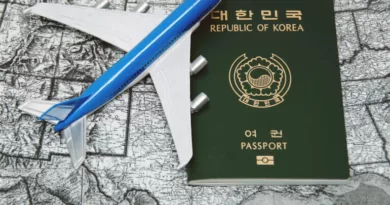Understanding USA Visa Validity and Dealing with Visa Denials
Introduction:
The United States, with its diverse landscapes, vibrant cities, and numerous opportunities, remains a sought-after destination for people from around the world. To visit, work, study, or do business in the U.S., obtaining a visa is often a crucial step. In this article, we delve into two important aspects of the U.S. visa process: Visa Validity and Visa Denials.
Part I: USA Visa Validity
1. Types of USA Visa Validity:
USA VISA VALIDITY When you obtain a U.S. visa, it’s essential to understand the terms and conditions of its validity:
- Single Entry: Allows one entry into the U.S. during the validity period. Once you leave, you’ll need a new visa to return.
- Multiple Entry: Permits multiple entries into the U.S. within the visa’s validity period, making it suitable for frequent travelers.
- Visa Duration: The period during which you can use the visa to enter the U.S., typically ranging from a few months to several years.
- Length of Stay: The duration you’re allowed to remain in the U.S. on each visit, specified on your Form I-94 or electronic I-94 record.
2. Maintaining Visa Validity:
To ensure your visa remains valid, follow these guidelines:
- Adhere to the visa category’s purpose (e.g., tourism, work, study).
- Maintain legal immigration status during your stay.
- Respect the visa’s length of stay and exit the U.S. before it expires.
- Keep your passport valid for at least six months beyond your intended departure date from the U.S.
3. Extending or Renewing a Visa:
If your visa is about to expire, or if you need more time for your intended stay, you may be able to apply for a visa extension or renewal. Requirements vary by visa category, so consult the U.S. Department of State for guidance.
Part II: USA Visa Denial
1. Reasons for Visa Denial:
Visa denials can be disappointing, but understanding the common reasons can help you avoid pitfalls in future applications. Common reasons for visa denial include:
- Lack of strong ties to your home country.
- Insufficient financial resources to cover expenses during your U.S. stay.
- Inaccurate or incomplete application information.
- Past immigration violations or overstays.
- Concerns about the true intent of your visit.
2. What to Do After a Visa Denial:
If your U.S. visa application is denied, consider these steps:
- Review the Denial Letter: Carefully read the denial letter to understand the specific reasons for your visa rejection.
- Correct Mistakes: Address any inaccuracies or issues mentioned in the denial letter.
- Reapply: You can reapply for a U.S. visa, but ensure that you have rectified the issues that led to the initial denial.
- Seek Legal Advice: Consult with an immigration attorney if you believe your denial was unjust or if you need guidance on improving your application.
- Build Stronger Ties: If your visa was denied due to insufficient ties to your home country, work on establishing stronger connections, such as a stable job, family, or property ownership.
3. Waivers and Appeals:
USA VISA DENIAL In some cases, you may be eligible for a visa waiver or appeal. Consult the U.S. Embassy or Consulate that denied your visa for information on the available options.
Conclusion:
Understanding USA visa validity and potential reasons for visa denial is crucial for anyone planning to visit, work, study, or do business in the United States. By adhering to visa conditions, maintaining strong ties to your home country, and addressing any application issues promptly, you can maximize your chances of a successful U.S. visa experience. In cases of visa denial, don’t be discouraged; instead, learn from the experience and take appropriate steps to improve your application for future attempts.



